This article may contain factual errors. It was created by the openai-ghostwriter 2.0.0 using the gpt-4-turbo model. This is a python script for automatic generation of web pages powered by the OpenAI's GPT-3.
Dieser Artikel kann Unsinn und falsche Aussagen enthalten! Er wurde vom openai-ghostwriter 2.0.0 erzeugt. Das ist ein Python-Skript für die vollautomatische Erstellung von Webseiten.
The History of Space Exploration

Imagine standing at the shore of a cosmic ocean, with its waves lapping at your feet. This is not just any ocean, but one filled with mysteries and wonders beyond our wildest dreams. The history of space exploration is akin to an epic voyage across this vast, uncharted waterway. It began with simple glances upwards, where ancient civilizations gazed at the stars and planets, weaving intricate stories about their movements and significance.
The more formal journey into space exploration started in earnest in the mid-20th century. On October 4, 1957, humanity's perspective forever changed when the Soviet Union successfully launched Sputnik 1, the first artificial satellite, into orbit around Earth. This small sphere, emitting nothing more than beeping radio signals, was enough to ignite a technological revolution. The space race between the United States and the Soviet Union had begun, marking an era where advancements in science and technology leaped forward at light speed.
Following Sputnik’s trailblazing journey, the path was paved for more ambitious voyages beyond our home planet. Yuri Gagarin's historic orbit around Earth in 1961 demonstrated that humans could survive and function in space. Not long after, America answered back with Project Mercury which eventually led to Neil Armstrong’s monumental first steps on the Moon in 1969 under NASA's Apollo program. These events were not merely feats of national pride; they were humankind’s first real steps into a larger universe.
Since those early days, our journey has taken us further into the cosmos than ever before. Space probes like Voyager have left our solar system entirely, sending back images of distant planets and information from the edge of interstellar space. Rovers trundle across Mars’ red soil while telescopes like Hubble peer deep into time itself to unravel the universe’s secrets.
The history of space exploration is a testament to human curiosity and ingenuity—a continuous quest driven by our innate desire to explore and understand our place in the cosmos. Each mission builds upon past knowledge like layers of sediment settling on a seabed over millennia—each layer telling its own story about our journey through this cosmic ocean we are all sailing together.
Early Rocket Development
The journey to the stars began not in a spacecraft, but within the curious minds of early 20th-century visionaries. Rocketry, initially perceived as fanciful fiction, found its footing through pioneers like Konstantin Tsiolkovsky and Robert Goddard. Tsiolkovsky, a Russian schoolteacher, proposed the radical idea of space exploration using rockets in the late 1800s. Meanwhile, Goddard, an American physicist and inventor, successfully launched the world’s first liquid-fueled rocket in 1926. Their work laid the foundational stones upon which all subsequent space endeavors were built, turning the dream of reaching beyond our earthly confines into a tangible quest for knowledge.
World War II Innovations
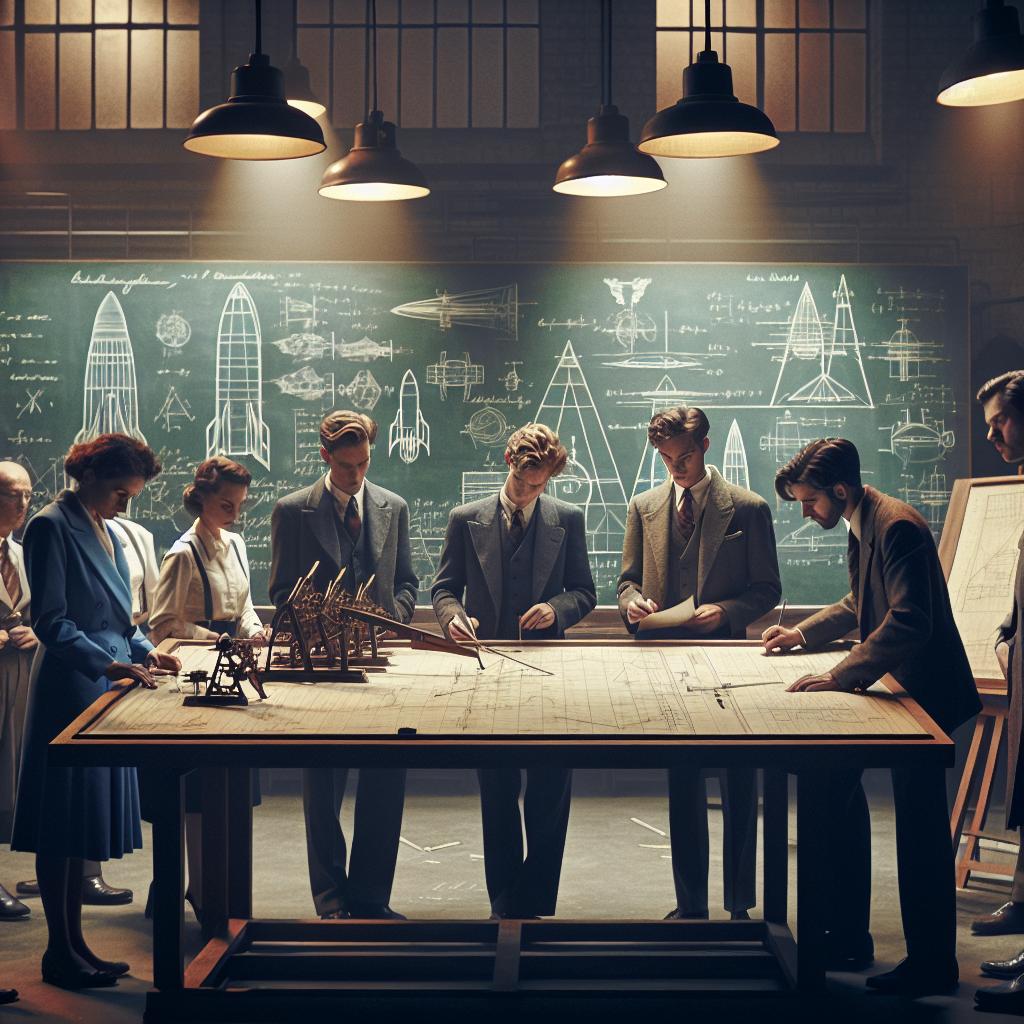
Before World War II, rockets were primarily seen as novelties or tools for fireworks displays. However, the onset of the war catalyzed rapid advancements in rocketry as nations sought new methods to gain an advantage on battlefields. The most significant strides were made in Germany under the guidance of Wernher von Braun, a name that would later become synonymous with rocket science in America.
Von Braun and his team at Peenemünde, on the Baltic coast of Germany, developed the V-2 rocket. Officially known as Aggregat 4 (A-4), the V-2 was the world's first long-range guided ballistic missile. The design and implementation of this rocket were revolutionary at its time. Powered by a liquid-propellant engine, combining liquid oxygen and ethanol, it could deliver a one-ton warhead over a distance of up to 300 kilometers (about 186 miles). More importantly from a scientific perspective, it was capable of breaching the boundary of space before arcing down towards its target.
The development of the V-2 missile during WWII represents not just an advancement in military weaponry but also a pivotal moment for space exploration technologies. The V-2 was essentially the first human-made object to make a brief visit to space during its test flights. This achievement demonstrated that space travel was technically feasible and laid foundational technologies used in future rockets.
Post-war, both the United States and Soviet Union were keen to harness German rocket technology and expertise for their own programs. Operation Paperclip saw more than 1,600 German scientists, engineers, and technicians led by von Braun emigrate to America where they continued their work on rockets. This operation significantly contributed to what would eventually become NASA's space program.
In parallel with American efforts through Operation Paperclip, the Soviet Union captured other segments of Germany’s rocket science team along with several V-2 rockets which they transported back to Russia for study. Under leaders like Sergei Korolev—often hailed as the father of Soviet space travel—these captured technologies provided critical insights that helped propel Soviet advances in rocketry during Cold War-era space race.
The legacy left by WWII-era innovations in rocket technology is profound; these early developments served as stepping stones toward achieving orbital flight and exploring outer space. Each launch today stands upon principles proven by those early engineers who worked under duress amidst global conflict. Their work transformed rockets from instruments of war into vehicles capable of carrying humans beyond our atmosphere.
As we reflect on these historical milestones within aerospace technology during World War II, it becomes clear how closely tied our exploratory ambitions are linked to past conflicts—and how technological advancements can emerge from periods of intense challenge and necessity. This intertwining narrative between warfare and exploration underscores an essential aspect about human ingenuity: often out of strife comes remarkable innovation that propels us forward into new realms previously thought unreachable.
Post-War Rocketry
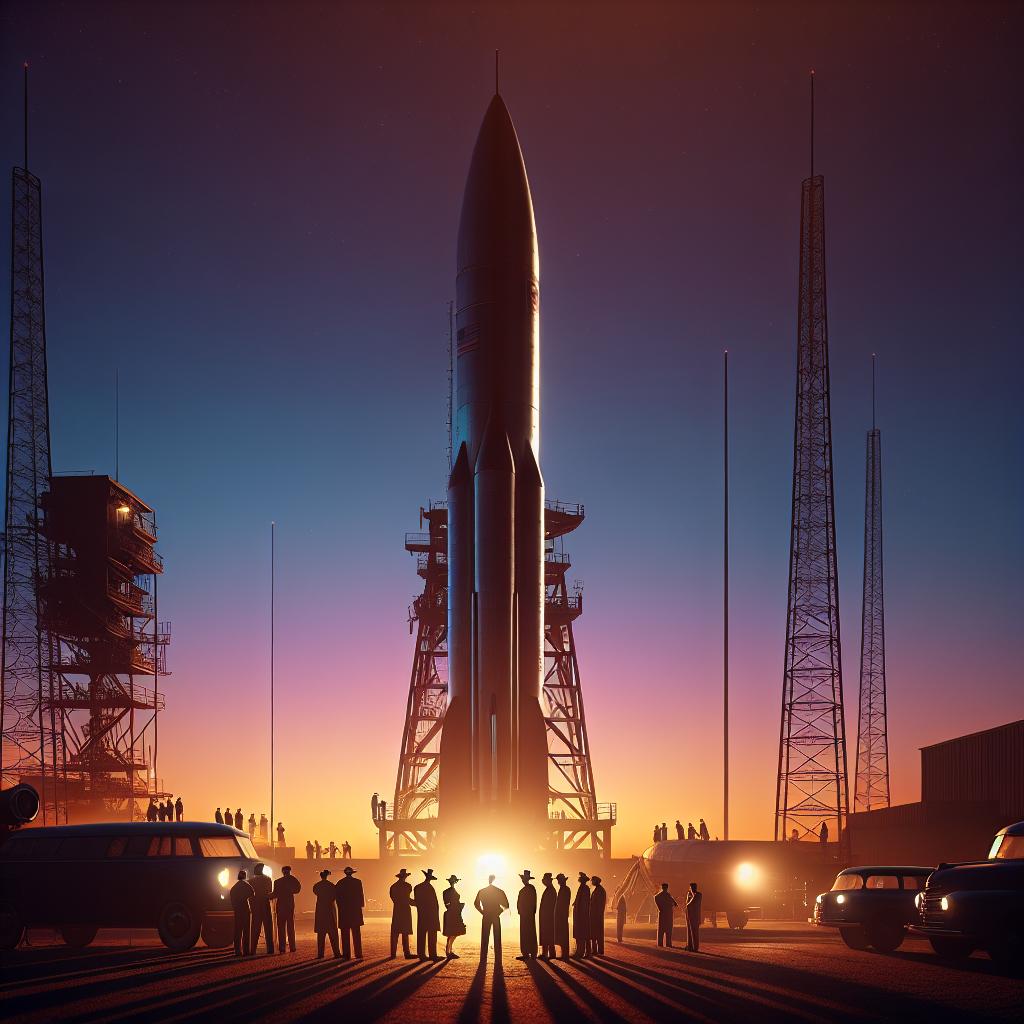
At the end of World War II, two superpowers emerged: the United States and the Soviet Union. Both nations were keen to harness the potential of rocket technology that had been significantly advanced during the war years, primarily by Germany. The V-2 rocket, developed by Wernher von Braun and his team, was particularly influential. It was the world’s first long-range guided ballistic missile, and its design would later inspire both American and Soviet rocket designs.
In the immediate post-war years, von Braun and many members of his team were spirited away to America under Operation Paperclip—a secret plan to utilize German scientists for American research. The Soviets captured other key figures and equipment from Germany's rocket program. Thus began a technological tug-of-war between the two great powers of the age.
In America, von Braun's work progressed from military applications to aspirations more celestial in nature. By 1958, his team at NASA (formed just one year earlier) launched Explorer 1, America’s first satellite. This achievement came on the heels of a significant Soviet success—Sputnik 1—the first artificial satellite ever put into orbit around Earth in 1957. Sputnik’s launch marked not only a pivotal moment in space exploration but also ignited what would be known as the Space Race.
This competition pushed technological innovation at an extraordinary pace. Rockets became larger and more powerful with each iteration designed to go further or carry more weight into space. The R-7 Semyorka became a workhorse for Soviet space efforts; it was this model that launched both Sputnik 1 and later Yuri Gagarin—the first human into space—aboard Vostok 1 in 1961.
Meanwhile, across the Atlantic, NASA developed its own series of rockets under Project Mercury which aimed to achieve manned spaceflight. Alan Shepard became the first American in space aboard Freedom 7 in 1961 shortly after Gagarin's historic flight.
The rapid development of these technologies was not without its challenges and failures—rockets exploded on launch pads or failed mid-flight due to various technical issues ranging from fuel problems to guidance system failures. Each mishap led to refinements and improvements; such is the nature of experimental technology where each failure teaches as much as any success.
Beyond mere national prestige or military advantage—the driving forces behind much early rocket development—there lay a deeper motivation shared by many involved: curiosity about our place in the cosmos and a compelling desire to explore it firsthand. This era saw astronomers like Carl Sagan begin their careers; they would later advocate passionately for robotic missions that could extend human senses far beyond our home planet without risking human lives.
The legacy of this intense period of early rocket development is immense. It set humanity on a path that has since seen footprints on lunar soil, robots on Mars, probes sent beyond our solar system—and countless satellites orbiting our Earth contributing everything from weather prediction to global communications.
Thus from fiery blasts atop launch pads arose not just new machines but new perspectives on life itself as we ventured outward seeking answers among stars—a journey propelled by those early rockets built through international rivalry yet driven by universal wonderment at what lies beyond our blue sky horizon.
The Space Race Begins

The story of rocketry starts much earlier than many might think, tracing back to simple gunpowder-filled tubes used in ancient China. However, it wasn't until the 20th century that significant strides were made towards rockets capable of reaching outer space. Pioneers like Konstantin Tsiolkovsky in Russia, Robert Goddard in America, and Hermann Oberth in Germany laid down the theoretical and practical foundations of modern astronautics. Tsiolkovsky proposed the use of liquid fuel for rockets in his seminal work "The Exploration of Cosmic Space by Means of Reaction Devices" (1903), which remarkably foresaw many aspects of space travel long before they became feasible.
Robert Goddard is often credited with creating and successfully launching the world’s first liquid-fueled rocket on March 16, 1926. His work was revolutionary yet largely unrecognized in his own time, particularly in his home country, the United States. Across the Atlantic, however, German scientists paid close attention to Goddard's innovations which would later influence their own rocketry advancements during World War II.
World War II proved to be a significant accelerator for rocket technology. Wernher von Braun emerged as a key figure during this era; he led Nazi Germany's V-2 rocket program which developed one of the first guided ballistic missiles. Despite its devastating use during wartime, von Braun’s V-2 rocket represented a major step forward—it was essentially humanity’s first long-range missile and served as a precursor to all modern rockets used in space exploration.
After World War II ended, both American and Soviet military forces scrambled to gather German technology and expertise from their defeated adversary. Operation Paperclip saw more than 1,600 German scientists, engineers, and technicians being moved to America—among them Wernher von Braun himself—who would later become instrumental figures in NASA's Apollo missions.
The actual commencement of what we now refer to as "The Space Race" arguably began with an announcement by International Geophysical Year (IGY) for 1957-1958—a scientific collaboration among nations including both USA and USSR—to launch artificial satellites into Earth orbit. The Soviets shocked the world by successfully launching Sputnik 1 on October 4th, 1957—the first human-made object to orbit Earth—followed closely by Sputnik 2 carrying Laika, a dog who became Earth's first living passenger into orbit.
This unexpected success by Soviet Union galvanized American efforts under newly formed NASA (National Aeronautics and Space Administration). In response to Sputniks’ launches came Explorer 1 from America on January 31st ,1958—the U.S.'s answer that discovered Van Allen radiation belts encircling Earth.
The ensuing decade saw an intense flurry of activity: Yuri Gagarin orbited Earth aboard Vostok 1 on April 12th ,1961 becoming human's first spaceman; Alan Shepard followed soon after becoming America’s first man in space; John Glenn orbited Earth three times aboard Friendship 7; Valentina Tereshkova became woman's first venture into space aboard Vostok 6; culminating eventually with Apollo Moon landing missions where Neil Armstrong took mankind’s historic steps onto lunar surface on July 20th ,1969.
Thus unfolded early chapters in our quest beyond terrestrial confines—an endeavor driven equally by curiosity as well as geopolitical rivalry—a testament to our unyielding spirit to explore new frontiers against all odds.
Manned Spaceflights
The journey of manned spaceflight is a testament to human curiosity and ingenuity. It began with Yuri Gagarin's historic orbit around the Earth in 1961, marking the first time a human ventured into space. This monumental event opened the gateway for numerous missions, leading to moon landings, space shuttle voyages, and extended stays on the International Space Station. Each step in this ongoing voyage not only expands our knowledge of the cosmos but also reflects our enduring quest to explore new frontiers and understand our place in the universe.
First Human in Space

The story of manned spaceflight begins amidst the backdrop of the Cold War, a period when technological supremacy was not just a matter of national pride but seen as crucial for national security. Both the United States and the Soviet Union were eager to prove their prowess. The space race was not merely about exploring uncharted territories; it was also about demonstrating technological and ideological superiority over each other.
Gagarin's spacecraft, Vostok 1, was a spherical capsule with just enough room for one person. It was equipped with minimal controls as it was designed to be piloted automatically or from the ground if necessary. The technology at that time did not allow for luxurious spacercraft interiors or complex manual control systems. Instead, engineers focused on ensuring basic life support systems were foolproof and reliable under extreme conditions.
The launch itself was fraught with risks that today would seem almost unacceptable. Gagarin himself reportedly said "Poyekhali!" (Let's go!) as Vostok 1 lifted off from Baikonur Cosmodrome in Kazakhstan. The rocket soared into the sky, breaking free from Earth's gravitational pull while carrying this lone voyager into orbit around our planet. For about 108 minutes, Gagarin orbited Earth at speeds never before experienced by any human being.
During his flight, Gagarin experienced weightlessness—a sensation completely foreign to any terrestrial creature up until then—turning him momentarily into a living experiment as well as an explorer. From his tiny porthole window in Vostok 1, he witnessed views that had only been imagined by humans before: vast swathes of continents rolling silently below and the thin blue line of Earth’s atmosphere enveloping our world against the black void of space.
Upon re-entering Earth's atmosphere—an equally perilous phase of his journey—Gagarin faced intense heat due to friction between his capsule and air molecules at high speed. Fortunately, Vostok’s heat shield performed flawlessly protecting him from temperatures comparable to those found on the surface of Venus. Before reaching ground level though, Gagarin ejected from his capsule at about 7 kilometers altitude and parachuted safely down to Earth separately from his spacecraft which landed nearby using its own parachute system.
Gagarin’s successful mission instantly made him an international hero and propelled him into stardom worldwide; it also provided a significant morale boost for the Soviet Union in its space race against America. This single orbit around Earth demonstrated that humans could survive conditions in outer space and opened up possibilities that had previously belonged solely in the realm of science fiction.
In retrospect, Yuri Gagarin’s voyage stands as more than just an impressive technical feat; it represents humanity’s indomitable spirit—the same spirit that drove explorers across vast oceans centuries ago now propelling us beyond our atmospheric shores into cosmic seas. It reminds us how much can be achieved when we dare to venture beyond familiar horizons.
Since Gagarin’s pioneering flight over six decades ago, hundreds have followed in his orbital path aboard shuttles and stations—from moon landings to long-duration stays aboard International Space Station—all contributing pieces to this ongoing puzzle called human space exploration.
Each astronaut who has left Earth since Yuri Gagarin has traveled on the shoulders of this giant leap for mankind; each mission weaving new threads into this expansive tapestry of stars we strive so ardently to understand better with every passing day.
Apollo Moon Landings
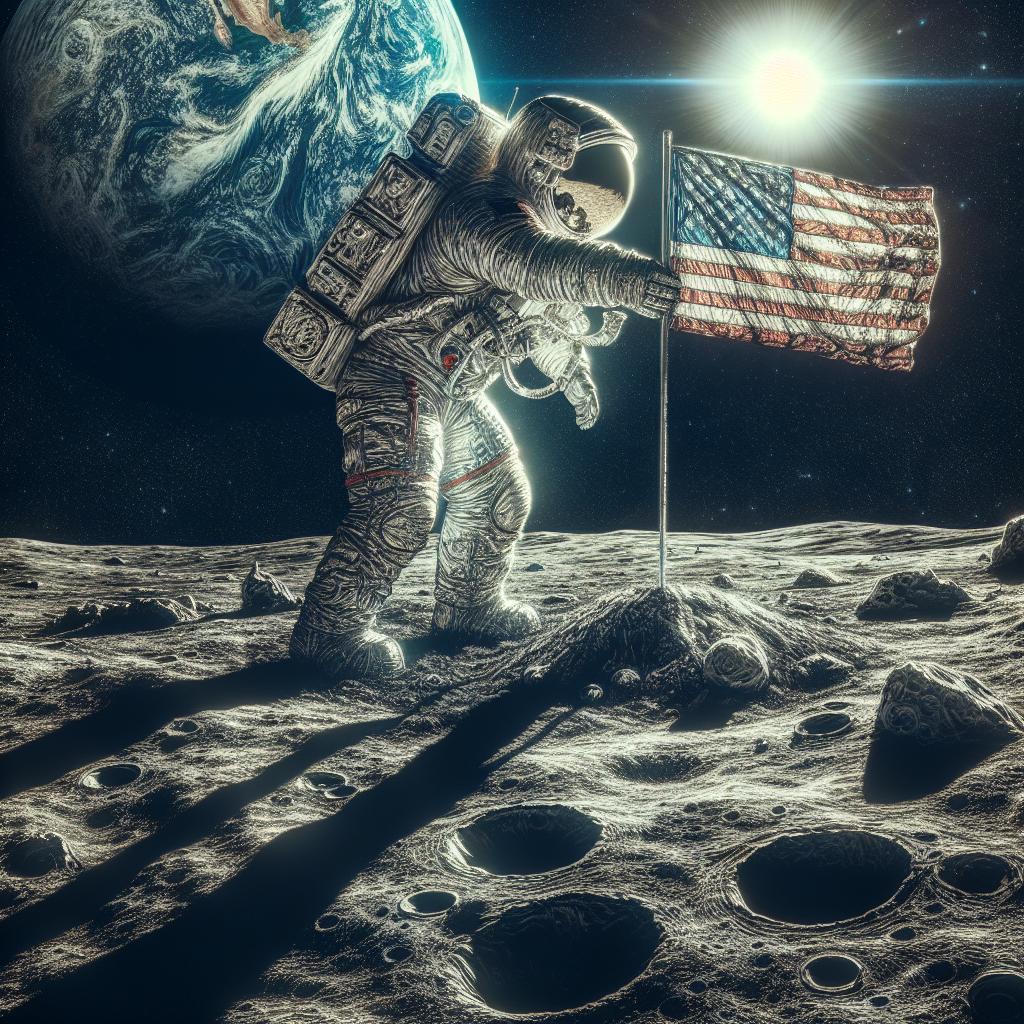
The Apollo program, initiated by NASA in 1961 with the ambitious goal of landing humans on the Moon and bringing them safely back to Earth, was both a technological and logistical endeavor that seemed nearly impossible at the time. President John F. Kennedy's bold declaration that America should go to the Moon "not because it is easy, but because it is hard," provided a stirring impetus that galvanized scientific communities and captured public imagination alike.
Apollo 11, which is often spotlighted as one of humanity's most monumental accomplishments, marked a pinnacle when astronauts Neil Armstrong and Buzz Aldrin landed their lunar module, Eagle, on the Moon on July 20, 1969. As Armstrong famously declared upon stepping onto the lunar surface, "That's one small step for [a] man, one giant leap for mankind," over half a billion people around Earth watched in awe through their television screens. This moment was not merely about setting foot on another world; it was about realizing an age-old collective dream of our species.
However, Apollo 11 was not alone in its celestial journey. It was preceded by several critical missions each designed to test different components and stages necessary for a successful moon landing. For instance, Apollo 8 had been the first manned spacecraft to orbit another celestial body during Christmas Eve in 1968. The crew read from Genesis while orbiting the Moon—an act that poignantly underscored humanity's enduring quest for meaning beyond our own planet.
Following Apollo 11's success were other missions which contributed further chapters to this high-flying saga. Apollo 12 replicated success with precision landing near Surveyor III probe; Apollo 14 focused on scientific experiments including seismic studies; and perhaps most dramatic of all was Apollo 13. Known popularly as "a successful failure" due to its onboard explosion en route to the moon which necessitated critical course corrections and life-saving measures from both astronauts and mission control just to return safely home—Apollo 13 exemplified human resilience and ingenuity under pressure.
Apollo missions also brought back hundreds of kilograms of lunar rock samples which have helped scientists decode many secrets about our moon’s geological history. Moreover, technological innovations developed for these missions—from freeze-dried food to miniaturized electronics—have found applications back on Earth that continue to benefit us today.
While later missions like Apollos 15 through 17 allowed for longer stays on lunar surface along with more extensive exploration using Lunar Roving Vehicles (moon buggies), public interest waned leading up to what would be prematurely deemed as 'the end' with Apollo 17 in December 1972 when Eugene Cernan left last human footprints on lunar soil.
In retrospect, though political motivations might have sparked this race to space initially, what remains indelible is how these voyages expanded human perspective—making us realize we are but tiny inhabitants within an expansive universe. The photographs taken by astronauts such as Earthrise seen from lunar orbit have become iconic reminders of our fragile existence clinging onto this pale blue dot we call home.
Today as new players enter space exploration scene—both national agencies like China’s CNSA or private entities like SpaceX—the spirit ignited by those early manned moon missions continues inspiring newer generations towards even greater leaps into unknown realms possibly Mars next!
Space Shuttle Era
The Space Shuttle era, spanning from 1981 to 2011, marked a significant chapter in the annals of space exploration. This period was characterized by the iconic Space Shuttle, a partially reusable spacecraft that resembled an airplane more than a traditional rocket. It allowed astronauts to launch into space, carry out missions such as satellite deployment and repair, and then glide back to Earth for a runway landing. The shuttle not only made space more accessible but also fostered international cooperation through its various missions involving numerous countries. This era significantly expanded our understanding of space and demonstrated the possibilities of reusable spacecraft.
Development and Design

The concept of the Space Shuttle emerged in the late 1960s and early 1970s, during a time when NASA was looking for a more cost-effective alternative to single-use rockets. The idea was revolutionary: a spacecraft that could launch like a rocket, orbit Earth, deploy or repair satellites, host experiments, construct space stations, and then return to Earth like an airplane, ready to be refurbished for another flight. This reusability was envisioned to drastically reduce the costs associated with space travel.
Designing such a complex system required overcoming unprecedented technical challenges. The Shuttle needed powerful rocket engines for lift-off, sophisticated orbital maneuvering systems for space operations, and heat-resistant materials capable of withstanding the extreme temperatures encountered during re-entry into Earth's atmosphere. Each component had to be meticulously designed to ensure safety and functionality across multiple missions.
One of the most distinctive features of the Space Shuttle was its Thermal Protection System (TPS). This system comprised thousands of specially crafted heat-resistant tiles made from silica fibers. These tiles were capable of withstanding temperatures up to 1,650 degrees Celsius (about 3,000 degrees Fahrenheit), crucial for protecting the Shuttle during the searing heat of re-entry. However, the fragility of these tiles led to maintenance challenges; they were prone to damage from debris impacts during launch or while in orbit.
The heart of the Shuttle lay in its main engines. Three Space Shuttle Main Engines (SSMEs) powered by liquid hydrogen and liquid oxygen provided the thrust needed for lift-off. These engines were marvels of engineering precision, capable of being throttled back or boosted depending on specific mission requirements—a rare feature among rocket engines at that time.
Accompanying these main engines were two Solid Rocket Boosters (SRBs), which provided additional thrust during the first two minutes after lift-off before being jettisoned into the ocean where they would be retrieved and reused. The SRBs were critical in providing enough power for the Shuttle to escape Earth’s gravitational pull but also posed risks due to their explosive nature—a factor contributing tragically to the Challenger disaster in 1986.
The orbiter itself—the part resembling an aircraft—was another feat of design. It housed not only crew quarters but also payload bays large enough to carry satellites such as Hubble Space Telescope into orbit. Its cockpit featured state-of-the-art avionics systems that allowed astronauts unprecedented control over their spacecraft compared to previous generations.
In addition to technical design considerations, economic factors played a significant role in shaping the Space Shuttle program. Originally projected as a cost-saving measure through its reusability aspect, budget constraints frequently influenced design decisions which sometimes resulted in compromises on safety or capability enhancements.
Despite these challenges and setbacks—including tragic losses with Challenger in 1986 and Columbia in 2003—the Space Shuttle program achieved remarkable successes over its 30-year history from April 1981 until July 2011. It completed 135 missions that included deploying satellites like Galileo which explored Jupiter; constructing parts of International Space Station; repairing telescopes including Hubble; conducting hundreds scientific experiments; fostering international cooperation through inclusion astronauts from various countries around world.
The legacy left behind by this iconic fleet continues influence current future endeavors outer space exploration as humanity seeks further understand universe beyond confines our planet
Notable Missions
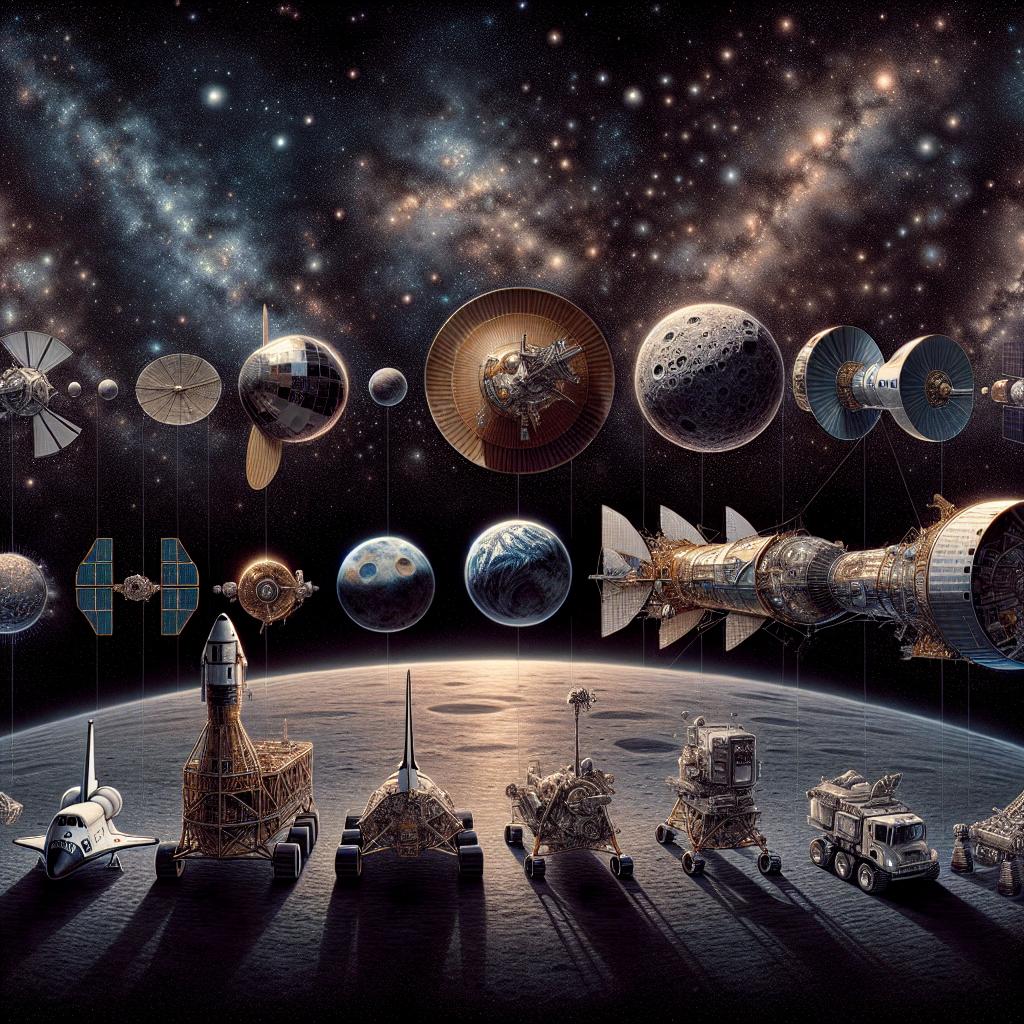
One of the most iconic missions was STS-1, the maiden voyage of the Space Shuttle program, which lifted off on April 12, 1981. Aboard were astronauts John Young and Robert Crippen, piloting the shuttle Columbia. This mission was pivotal as it tested the feasibility of a reusable spacecraft—the first of its kind. Unlike any previous spacecraft, which were discarded after one use, the Space Shuttle promised a new era where space vehicles could be launched, landed, and launched again. The success of STS-1 paved the way for numerous subsequent missions and set a precedent for all future reusable spacecraft designs.
Another landmark mission was STS-31, launched on April 24, 1990. This mission is best known for deploying the Hubble Space Telescope into orbit. The Hubble has since revolutionized astronomy by providing unprecedented clear views of the universe without the distortion caused by Earth's atmosphere. It has allowed astronomers to observe some of the most distant stars and galaxies ever seen, contributing immensely to our understanding of phenomena such as black holes and dark energy.
STS-61 carried another significant mission: it was tasked with repairing the Hubble Space Telescope in December 1993. After its deployment three years earlier during STS-31, scientists realized that a flaw in Hubble’s primary mirror affected its capabilities. The crew of Endeavour executed a series of five spacewalks—the most conducted on any single mission at that time—to install corrective optics alongside various other upgrades to Hubble’s systems. This successful service mission restored Hubble’s vision and underscored the shuttle’s role in servicing orbital satellites.
The International Space Station (ISS), perhaps one of humanity's greatest collaborative projects in space exploration, owes much to the shuttle program as well. Numerous shuttles participated in assembling this monumental structure piece by piece in orbit around Earth. One notable example is STS-88 aboard Endeavour in December 1998 which carried up Unity Node 1—the first module of ISS—linking it with Zarya Module previously placed by Russia. This marked not only an engineering feat but also an international cooperation milestone.
Tragedy also touched this era profoundly during two missions: Challenger on STS-51-L and Columbia on STS-107. On January 28th, 1986 Challenger broke apart shortly after liftoff due to an O-ring failure in one of its solid rocket boosters leading to loss all seven crew members including Christa McAuliffe who would have been first teacher in space; similarly Columbia disintegrated upon re-entry on February 1st ,2003 due damage sustained from foam insulation strike during launch killing all seven astronauts onboard . These disasters led extensive investigations modifications within NASA aimed at improving safety protocols ensuring such tragedies do not recur.
The final flight under this storied program was Atlantis’ journey on STS-135 which concluded July 21st ,2011 . It marked end an era but also left behind legacy innovation international cooperation will continue inspire future generations explorers dreamers alike . As we look back these notable missions we remember how they have shaped our current pursuits beyond Earth reminding us both challenges triumphs inherent pushing boundaries human capability knowledge frontier.
Challenger and Columbia Disasters

On January 28, 1986, the Space Shuttle Challenger broke apart 73 seconds after liftoff, claiming the lives of all seven crew members. Among them was Christa McAuliffe, a high school teacher from New Hampshire, who would have been the first civilian to travel into space, symbolizing NASA's commitment to making space accessible to non-astronauts. The disaster occurred due to the failure of an O-ring seal in its right solid rocket booster. The O-ring, not designed to handle the unusually cold temperatures that morning, failed to seal properly. This malfunction allowed pressurized burning gas from within the solid rocket motor to reach the outside and impinge upon the adjacent SRB attachment hardware and external fuel tank. This catastrophic failure led to a chain reaction that ultimately destroyed the vehicle.
The loss of Challenger led to a 32-month hiatus in shuttle flights and triggered a thorough investigation resulting in major changes in both NASA’s organizational culture and its technical practices. The Rogers Commission Report pointed out both mechanical failures and lapses in decision-making processes at NASA. It emphasized that safety had been compromised by pressures for schedule adherence and cost containment.
Seventeen years later, on February 1, 2003, another grim chapter unfolded with the loss of Space Shuttle Columbia during re-entry into Earth's atmosphere at the conclusion of mission STS-107. The disaster claimed the lives of all seven astronauts aboard. Investigations revealed that during Columbia’s launch, a piece of foam insulation broke off from the external fuel tank and struck the left wing’s reinforced carbon-carbon panels. This seemingly minor impact created a hole through which hot gases penetrated during re-entry, leading to structural failure within minutes.
The Columbia Accident Investigation Board (CAIB) report highlighted deep-rooted issues in NASA's culture that mirrored those identified after Challenger—particularly regarding decision-making processes where known risks were played down despite available evidence from previous missions showing foam shedding as an ongoing issue. Post-Columbia reforms focused on improving NASA's safety culture, enhancing inspection procedures throughout missions, and ensuring better damage assessment capabilities while also setting stringent guidelines for future shuttle flights.
Both tragedies profoundly impacted public perception of space exploration. They underscored not only inherent risks but also raised questions about management practices at one of America’s most storied institutions. However tragic these events were though they spurred significant advancements in technology and operational protocols aimed at preventing similar incidents.
In response to these disasters and following more than two decades of service by five orbiters (Columbia, Challenger, Discovery, Atlantis, Endeavour), NASA retired its Space Shuttle fleet in 2011 with Atlantis' final mission (STS-135). This marked an end to an iconic era but also paved way for new partnerships with private companies like SpaceX and Boeing under NASA's Commercial Crew Program aimed at continuing human access to low-Earth orbit more safely and cost-effectively.
As we reflect on these pivotal moments within our journey beyond Earth's confines—the triumphs alongside heartbreak—we are reminded how each step forward comes with profound responsibilities: To learn from past mistakes; ensure utmost safety; maintain transparency; foster innovation; respect life above all else; thus honoring those who have paid ultimate sacrifices pushing boundaries for humanity’s quest among stars.
International Cooperation
The history of space exploration is a vivid tapestry woven from threads of human curiosity, ambition, and cooperation. Since the launch of Sputnik in 1957, nations have often transcended terrestrial disputes to reach for the stars together. This collaborative spirit is epitomized by projects like the International Space Station (ISS), where astronauts and cosmonauts from diverse countries live and work in harmony, orbiting Earth every 90 minutes. Such partnerships not only advance our understanding of the cosmos but also remind us that our fates are interconnected, with space as a common frontier urging us toward unity and peace.
The International Space Station

Launched into orbit in 1998, the ISS has been developed and maintained through the collaboration of five major space agencies: NASA (United States), Roscosmos (Russia), ESA (European Space Agency), JAXA (Japan Aerospace Exploration Agency), and CSA (Canadian Space Agency). These agencies represent 15 countries, making the ISS truly international. This partnership is historic, considering the Cold War tensions that once made cooperative ventures between some of these nations seem unlikely.
The genesis of the ISS project can be traced back to the end of the Cold War when global perspectives shifted from competition to collaboration. The initial agreements to build the station were signed in 1984 under U.S. President Ronald Reagan's administration, but it was only after the dissolution of the Soviet Union that these plans could evolve into a more inclusive international program. The Russian space agency brought invaluable experience from their Mir space station program, which significantly shaped the architecture and operational strategies of the ISS.
Building and maintaining such an expansive structure in space is an astronomical endeavor both literally and figuratively. The construction of the ISS required over 40 assembly flights provided by American Space Shuttles and Russian Proton and Soyuz rockets. It’s fascinating to think about how modules from different countries had to seamlessly connect in orbit, each piece designed independently yet needing to fit perfectly with others like an intricate cosmic puzzle.
The scientific achievements aboard the ISS have been profound. Research conducted in this unique microgravity environment has led to breakthroughs in biotechnology, weather forecasting, and materials science. For instance, scientists have studied protein crystal growth in microgravity, leading to improved drug formulations on Earth. Moreover, experiments like growing food in space have implications for future long-duration human space missions as well as sustainable agricultural practices on our planet.
However, beyond science and technology, perhaps one of the most significant outcomes of the ISS project is its role in diplomacy. In an era where geopolitical tensions frequently dominate headlines, the ISS stands as a testament to peaceful collaboration. Astronauts and cosmonauts live and work side by side for months at a time, sharing tasks, meals, and personal stories—transcending terrestrial national boundaries.
This ethos of cooperation extends even during times of crisis on Earth. For example, despite strained relations between Russia and Western countries following events such as Russia's annexation of Crimea in 2014 or sanctions related to various geopolitical conflicts, cooperation on ISS projects continued largely unaffected. This resilience underscores not only mutual dependencies engendered by such partnerships but also a shared commitment to higher ideals.
Looking forward toward future endeavors in space exploration—such as missions to Mars or establishing lunar bases—the lessons learned from operating the International Space Station will undoubtedly influence how global cooperation might continue or evolve. As we reach for stars beyond our own solar system someday, it’s possible that new alliances will form around shared goals for exploration and discovery.
In conclusion, while astronauts look down upon Earth without borders from their vantage point aboard the ISS—a reminder that our planet is but a small blue dot suspended in a vast cosmic sea—they remind us too about our shared humanity and responsibilities towards each other regardless of nationality or creed. Thus stands the International Space Station: not only as an outpost on the frontier of human knowledge but also as an enduring symbol of what we can accomplish together when we look above us toward infinite possibilities.
Global Satellite Networks

Global satellite networks began to take shape in the mid-20th century, as countries raced to explore outer space. Initially, these efforts were competitive rather than cooperative, with nations like the United States and the Soviet Union leading the charge during the Cold War era. However, as technology advanced and the benefits of space exploration became apparent, collaboration started to replace competition.
One early example of international cooperation in satellite communications was Intelsat, an organization founded in 1964. It started with an agreement among nations to share a communications satellite system. This initiative was groundbreaking because it allowed for instant communication across vast distances, connecting different parts of the world like never before. Today, Intelsat operates one of the world’s largest satellite telecommunications fleets, serving over 200 countries and territories.
Another pivotal project was the Global Positioning System (GPS), originally developed by the United States Department of Defense for military navigation. Eventually, this technology was made available for civilian use worldwide in the 1980s. The decision to provide access to GPS data free of charge transformed global navigation practices and spurred innovations across various sectors including transportation, agriculture, and disaster response.
The spirit of international collaboration is also vividly illustrated by weather satellites. Organizations such as EUMETSAT (European Organisation for the Exploitation of Meteorological Satellites) and NOAA (National Oceanic and Atmospheric Administration) from the United States work together closely. They share data crucial for weather forecasting and monitoring environmental changes on a global scale. This cooperation helps countries prepare better for natural disasters and contributes significantly to climate research.
In recent years, projects like Galileo—the European Union's global navigation satellite system—exemplify how countries can collaborate on even more sophisticated systems that rival older ones like GPS. Galileo offers improved accuracy compared to existing services and ensures that Europe remains at the forefront of technological advancements in satellite navigation.
Beyond practical applications such as communication, navigation, and weather forecasting, international satellite cooperatives have profound implications for diplomacy and global security. They foster peaceful relations among nations through shared goals and mutual benefits. For instance, satellites play a crucial role in verifying compliance with international treaties on arms control or environmental protection by providing unbiased monitoring data accessible to all stakeholders.
Moreover, these collaborations pave the way for future joint missions aimed at deeper space exploration beyond our own planet. The International Space Station (ISS), perhaps one of humanity’s most ambitious cooperative projects yet involves multiple countries including Russia, United States Japan Canada Europe working side by side conduct scientific research conditions similar those found outer space This partnership not only advances our understanding universe but also demonstrates how collaborative efforts can bridge national differences create something greater than sum its parts
In conclusion while challenges remain fostering international cooperation especially complex politically charged environments achievements global satellite networks remind us what possible when world comes together pursuit knowledge progress Whether improving everyday life Earth exploring distant galaxies collective endeavors satellites show that sky indeed limit when it unity purpose
Modern Private Ventures
The history of space exploration is a fascinating journey from the first artificial satellite, Sputnik, launched by the Soviet Union in 1957, to today's era where private companies like SpaceX and Blue Origin carve their paths among the stars. Initially dominated by national agencies such as NASA and Roscosmos, this new chapter sees innovative entrepreneurs stepping forward, pushing the boundaries of what's possible. These modern ventures are not just about reaching new heights but also about making space more accessible. As we stand on the brink of a new age in space travel, these private enterprises are crucial in shaping our cosmic destiny.
Rise of Private Companies

Historically, space was a domain reserved for superpowers, with astronomical costs and towering technological barriers preventing private entities from entering the arena. The Apollo missions, emblematic of this era, were feats of national effort and pride. Yet, as technology advanced and governmental priorities shifted, opportunities emerged for private companies to step into roles once dominated solely by national agencies.
The rise of private space ventures can largely be attributed to several key factors. First among these is technological advancement. As computer technology improved and became more accessible, it reduced both the cost and complexity of space technology. Simultaneously, materials science made leaps forward, allowing lighter and more durable spacecraft components to be manufactured at lower costs.
Another catalyst for the emergence of private space companies was the changing policy landscape. Governments began to see the value in commercializing space technologies. In the United States, significant legislation such as the Commercial Space Launch Act of 1984 laid foundational stones that allowed private enterprises legal clearance to launch payloads into orbit. These legislative adjustments opened doors for many businesses that had previously seen space as an unreachable frontier.
Among these new entrants into the field of space exploration are some now well-known names like SpaceX, Blue Origin, and Virgin Galactic—each founded by high-profile entrepreneurs Elon Musk, Jeff Bezos, and Richard Branson respectively. These companies have redefined what is possible in space travel with their innovative approaches and bold goals.
SpaceX perhaps illustrates this shift most dramatically. Founded in 2002 with the goal of reducing space transportation costs to enable Mars colonization, SpaceX developed the first privately funded liquid-fueled rocket to reach orbit (Falcon 1) in 2008. Since then, they've achieved numerous milestones previously monopolized by government projects—such as successfully docking a commercial spacecraft at the International Space Station (ISS). Their development of reusable rocket technology has potential not only to reduce costs further but also to increase access to space activities significantly.
Blue Origin focuses on human spaceflight with a vision towards millions living off-Earth one day. They have developed technologies like New Shepard suborbital rocket systems designed for tourism and research missions which could democratize access to space even further.
Virgin Galactic targets suborbital flights aimed primarily at tourists looking for a brief experience outside Earth's atmosphere—a niche market that nonetheless pushes forward public engagement with aerospace endeavors.
The impact of these modern private ventures extends beyond just making headlines or fulfilling childhood dreams of astronauts; they represent profound shifts in economic landscapes and strategic capabilities globally. The entry of private players catalyzes innovation through competition while also fostering collaborations that might have been unlikely under purely governmental auspices.
This privatization wave brings benefits such as increased efficiency due to competition-driven cost reductions and accelerated innovation cycles due to entrepreneurial risk-taking attitudes not typically found in government programs which are often risk-averse due to political considerations.
In conclusion, as we witness this ongoing transformation where private companies increasingly take center stage in writing history’s next chapters on space exploration—the cosmos becomes not just a place for geopolitical rivalry or scientific curiosity but also a canvas for entrepreneurial spirit and human aspiration writ large across the stars.
Mars Exploration Plans

Historically, space exploration was dominated by governmental agencies like NASA in the United States or Roscosmos in Russia. The enormous financial, technological, and logistical demands of sending missions beyond Earth made space a playground for superpowers. However, as technology advanced and became more accessible, private companies began to see space not only as a frontier to be explored but also as an opportunity for commercial and scientific ventures.
Among these private entities, SpaceX is perhaps the most prominent leader with ambitious plans for Mars. Founded in 2002 by Elon Musk, SpaceX has drastically reduced the cost of reaching orbit through its reusable rocket technology. Musk's vision extends far beyond satellite launches or servicing the International Space Station (ISS). He envisions a future where humans are a multi-planetary species, with Mars being our next home. This bold plan hinges on developing a fully reusable spacecraft known as Starship which is designed to carry up to 100 people on interplanetary journeys.
SpaceX's approach to Mars is methodical yet audacious. The company plans initial missions that would focus on cargo delivery and infrastructure setup—essentials like power stations and life support systems—before attempting manned missions. These preparatory steps are crucial; they lay down the groundwork for sustaining human life millions of miles away from Earth. Imagine setting up camp in an environment that is utterly inhospitable, where temperatures can plummet to minus 125 degrees Celsius at night and dust storms can engulf the entire planet for months.
Another significant player is Blue Origin, founded by Jeff Bezos with a philosophy encapsulated in their motto "Gradatim Ferociter" - step by step ferociously. Although Blue Origin’s immediate focus appears more centered around suborbital flight and orbital infrastructure via their New Shepard and New Glenn rockets respectively, they too harbor longer-term ambitions towards contributing to human presence on Mars.
Blue Origin emphasizes sustainable space travel. Their vision involves not just visiting other planets but also utilizing resources found in space—such as water ice from lunar poles—to sustain human colonies off-Earth without continuously stripping resources from our home planet. This concept aligns closely with what scientists call 'in-situ resource utilization', a critical strategy for any long-term presence on Mars or elsewhere.
Meanwhile, lesser-known companies like Relativity Space are leveraging innovative technologies such as 3D printing to potentially lower costs further and speed up production cycles for rockets capable of interplanetary travel. Their approach could democratize access to Mars by enabling more frequent launches at reduced costs—a vital factor considering the vast logistics involved in establishing a Martian colony.
The challenges facing these modern pioneers are immense: technological hurdles like creating reliable life support systems; physiological challenges such as protecting astronauts from cosmic radiation; ethical questions about planetary protection; legal issues concerning space governance; economic considerations about funding such monumental endeavors—all underpinning this grand quest.
In essence, these modern private ventures into Mars exploration represent more than just technological advancements—they signify an evolving paradigm wherein humanity’s future as an interplanetary species seems increasingly plausible. As we stand on this precipice looking towards Mars through both telescopes and CAD designs of spacecrafts, it becomes clear that our journey into deep space will be one of collaboration between governments and private enterprises—a testament to our collective dream of reaching out into the cosmos.
New Technologies and Innovations
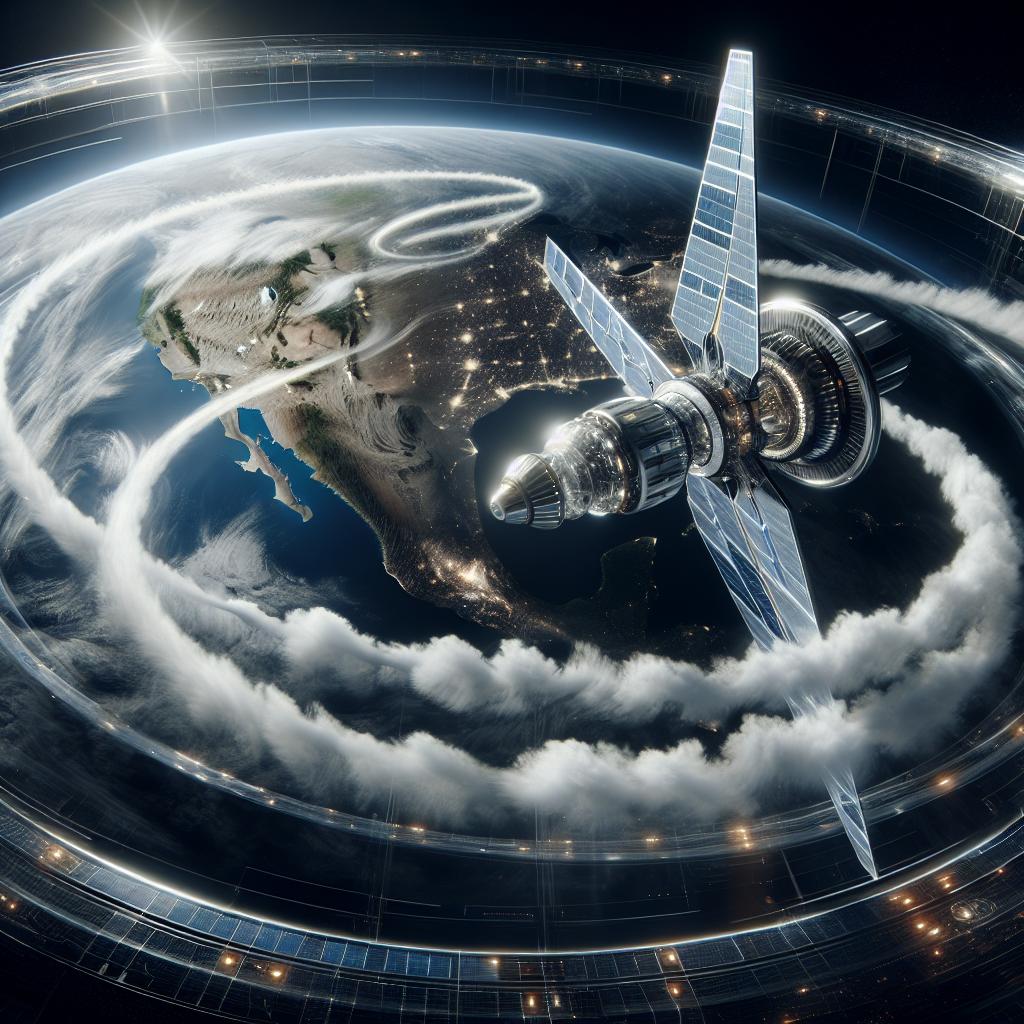
Historically, space exploration was dominated by agencies like NASA in the United States and Roscosmos in Russia. These organizations developed massive rockets and complex spacecraft over decades. However, since the early 2000s, there has been a seismic shift towards privatization in space industries. Companies such as SpaceX, Blue Origin, and Virgin Galactic have introduced new technologies and innovative approaches to space travel that contrast sharply with traditional methods.
One of the most significant innovations brought about by these private ventures is reusable rocket technology. Spearheaded by SpaceX with its Falcon 9 rocket, this technology allows for the first stage of a rocket—the largest part which provides initial thrust—to land back on Earth after launch. This can then be refurbished and used for future missions. The analogy here might be akin to using the same airplane for multiple flights instead of building a new one for each journey. This approach drastically reduces costs and increases the frequency of launches.
Another area where private companies are making waves is in developing spacecraft for commercial space travel. For instance, Virgin Galactic is working on suborbital flights that offer a few minutes of weightlessness and spectacular views of Earth from space. Imagine boarding a plane that not only flies you to distant continents but also offers an excursion beyond our atmosphere! Meanwhile, Blue Origin's New Shepard spacecraft aims to provide similar experiences with an emphasis on safety and accessibility.
Beyond tourism, private ventures are also focusing on satellite deployment services. Small satellites, which are cheaper to build and launch than traditional large ones, are increasingly used in various applications from weather forecasting to global communications. Companies like Rocket Lab and SpaceX's Starlink project aim to create constellations of these small satellites that can provide high-speed internet access across even the most remote areas on Earth.
The ambitions don’t stop at orbiting Earth or brief suborbital trips; they extend to interplanetary travel as well. SpaceX’s Starship system is being designed with the goal of carrying humans to Mars within our lifetime—a concept that sounds more science fiction than fact but is inching closer to reality under Elon Musk’s ambitious vision.
Moreover, these modern private ventures are contributing significantly to scientific research as well. Missions like those planned by Astrobotic Technology aim to deliver payloads to the Moon which include experiments from universities and other institutions looking to study everything from lunar dust to solar radiation effects outside Earth’s protective magnetosphere.
This surge in private sector participation does not mean government agencies have stepped back; rather it represents a new form of collaboration where both sectors complement each other's strengths—public bodies providing regulatory frameworks and guidance while private entities inject innovation and efficiency into operations.
In conclusion, as we gaze up at night sky studded with stars—each potentially a sun to other worlds—it's clearer now more than ever that our approach toward exploring this infinite darkness has evolved profoundly thanks primarily due modern private ventures' technological innovations contributions field space exploration Their pioneering spirit combined relentless pursuit efficiency pushing boundaries what possible helping us all get closer stars
